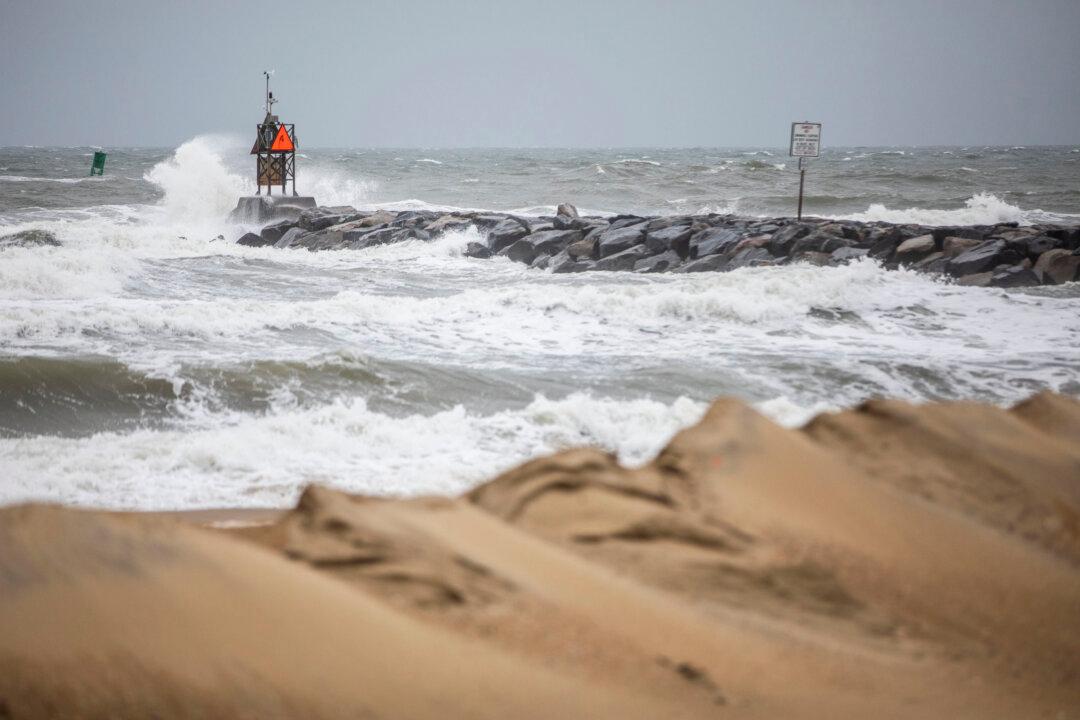ANNAPOLIS, Md.—Tropical Storm Ophelia gained strength as it churned toward the North Carolina coast on Friday, promising a weekend of heavy rain and windy conditions throughout the mid-Atlantic.
Forecasters issued a hurricane watch for parts of eastern North Carolina. The storm was expected to make landfall in North Carolina on Saturday morning and dump as much as 7 inches (17.7 centimeters) of rain across portions of the state and into southeast Virginia.





